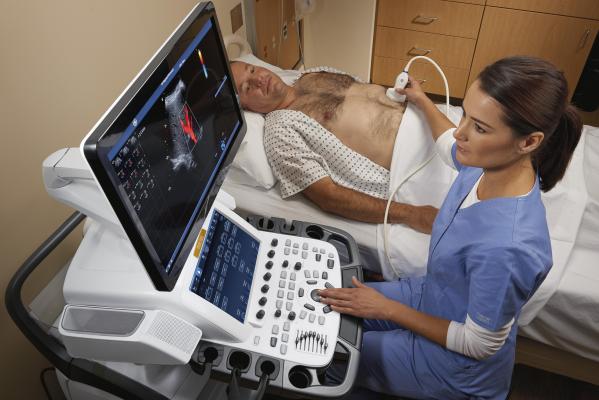
September 12, 2016 — Tiny microbubbles are being used to more effectively identify liver tumors, according to a study described at the 31st annual Advances in Contrast Ultrasound conference, Sept. 8-9 in Chicago.
Patients with hepatocellular carcinoma, the third leading cause of cancer deaths worldwide, were found to benefit from contrast-enhanced ultrasound (CEUS) imaging when magnetic resonance imaging (MRI) was inconclusive, according to Stephanie Wilson, a professor of medicine at the University of Calgary in Canada and co-president of the International Contrast Ultrasound Society. She said that inconclusive MRIs occur frequently.
"This is an exciting option because hepatocellular carcinoma is the most common form of liver cancer, and standard imaging with MRI is often an insufficient option for characterizing the tumor," Wilson said.
CEUS uses liquid suspensions of tiny gas microbubbles to improve the clarity and reliability of an ultrasound image without exposing patients to ionizing radiation. The microbubbles are smaller than red blood cells and, when they are injected into a patient's arm vein, they improve the accuracy of diagnostic ultrasound exams. The microbubbles are expelled from the body within minutes.
David Cosgrove, emeritus professor at Imperial and Kings Colleges London, said the findings demonstrate the vast potential benefits of using microbubble ultrasound contrast agents as a safe, convenient and effective diagnostic imaging tool that improves patient care without exposing individuals to ionizing radiation. "CEUS is an excellent modality that can help differentiate benign from malignant tumors," he added.
"The findings are extremely exciting because this study appears to represent the first time ultrasound microbubbles have been used in patients for drug delivery," according to Steven Feinstein, M.D., co-president of ICUS and a professor of medicine at Rush University, Chicago.
For more information: www.icus-society.org


 March 19, 2025
March 19, 2025 








